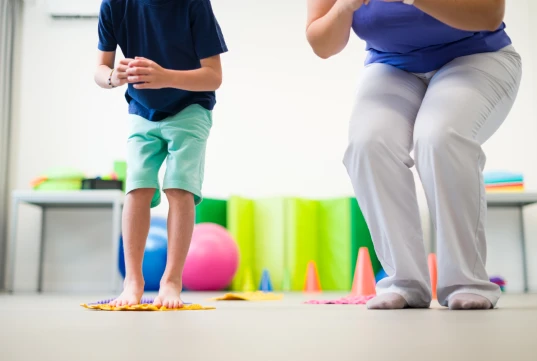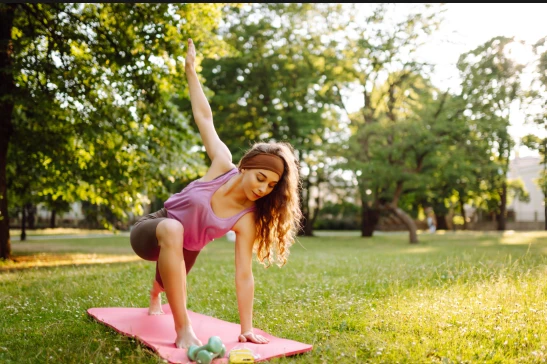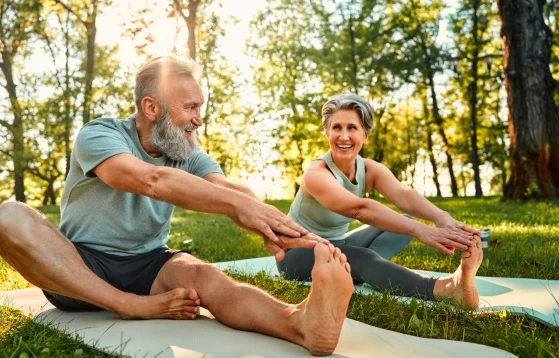Author: Terrence Shenfield MS, RRT-ACCS, RPFT, NPS, AE-C
Your core is more than just a set of abdominal muscles; it’s the powerhouse of your entire body. A strong core has a direct impact on your balance, posture, and overall stability, which are essential for daily activities and physical performance. But did you know how much it influences even the smallest motions in your life? From standing tall to walking confidently and avoiding falls, the advantages are immense.
This article will explore the importance of a strong core for posture, demonstrate how core strength improves stability, and explain the critical benefits of core strength for balance and performance.
Why Your Core Matters
What is Your Core?
Your core is a group of muscles located in the center of your body. It includes the abdominal muscles, lower back, pelvic floor, and obliques. These muscles work together to stabilize your spine and enable movement. They are involved in everything from bending over to pick up groceries to maintaining posture while sitting at a desk.
The Foundation of Movement
A strong core is essential not only for athletes but for everyone. It forms the foundation for every movement you make. When your core is weak, your body compensates by overusing other muscles, which increases the risk of injury.
Benefits of Core Strength for Balance
Having a strong core significantly enhances your balance. Whether you're an athlete aiming to excel in your sport or someone seeking to prevent falls, improving core strength can make a world of difference. Strong core muscles stabilize your body and enable better control over your movements.
For example, simple exercises like planks or standing on one leg help train your stabilizing muscles and improve balance over time. Enhance your coordination skills by incorporating targeted exercises, as highlighted in this article.
Importance of a Strong Core for Posture
Sitting for extended hours, poor ergonomics, and lack of exercise can all contribute to bad posture. A strong core mitigates these issues by supporting proper spinal alignment. When your core is strong, you don’t slouch as much, and your back bears less strain from maintaining posture throughout the day.
Try incorporating core-focused exercises like dead bugs or bird dogs into your routine to strengthen the muscles that maintain upright posture. Check out more fitness tips and tools for better posture at ATECAM Health and Wellness.
How Core Strength Improves Stability
Stability is not only important for athletes during movement-intensive sports but is also vital for day-to-day activities. Core stability exercises can improve your movements, making you less prone to injuries.
More importantly, stability contributes to efficient motion control. For instance, juggling or balancing on a slackline are fantastic ways to challenge your core while enhancing coordination. Explore additional ways to improve coordination on our coordination blog.
Six Steps to Strengthen Your Core
Here are practical steps to build and maintain a strong, functional core that contributes to your balance, posture, and stability.
- Plank Variations
Planks are excellent for strengthening the entire core. Start with basic planks, then progress to side planks or dynamic planks with arm and leg movements to challenge stability.
- Bridge Exercises
Bridge exercises are great for strengthening your lower back and glutes while engaging your entire core.
- Balance Workouts
Practice exercises like standing on a wobble board or single-leg squats. These are fantastic for engaging stabilizer muscles.
- Yoga or Pilates
Incorporating yoga or Pilates into your fitness routines provides low-impact yet effective core-focused movements.
- Ball Rollouts
Use an exercise ball to roll out into a plank position slowly and retract. This movement engages your entire core.
- Functional Movements
Functional training that mimics real-life movements, such as kettlebell swings or medicine ball slams, builds a strong and functional core.
Taking Core Training Beyond Basics
While everyone can benefit from basic core exercises, elevating your training game will further enhance stability, posture, and balance. Advanced techniques such as cable core rotations, weighted carries, and plyometric core exercises add variety and intensity to your workouts.
Additionally, staying consistent is key. Small, daily habits like engaging your core while walking or sitting can compound into better strength over time.
Prioritizing Core Strength Across Life Stages
Core strength matters at all stages of life. For children and young adults, developing a strong core can support healthy growth and prevent poor posture. Older adults benefit most, as core training significantly reduces the risk of falls and injuries.
Integrating core exercises into your routine doesn’t take hours. Just 15 minutes a day dedicated to your core can yield substantial long-term benefits. Health experts suggest focusing on consistency over intensity when starting out.
Next Steps for a Stronger Core
A strong core empowers your body to tackle life’s physical challenges with ease, balance, and confidence. Whether you want to boost athletic performance, improve posture, or just enhance your overall well-being, core strength is where it all begins.
Visit ATECAM Health & Wellness for more tips, products, and tools designed to help you achieve your fitness and health goals. Don't wait to start improving your balance, posture, and stability today!



